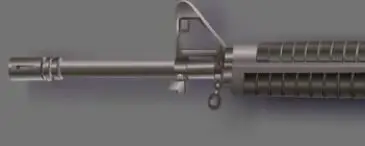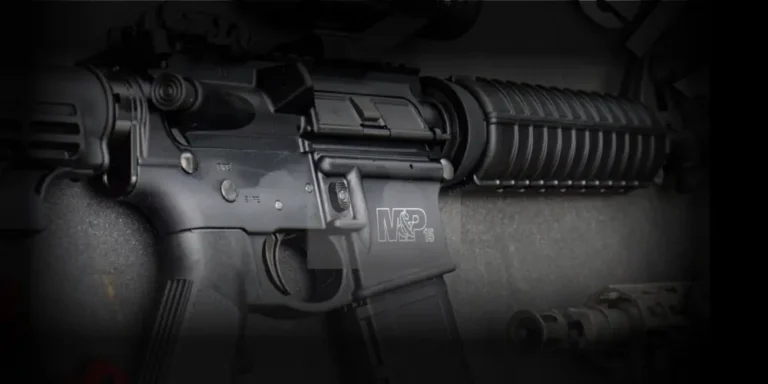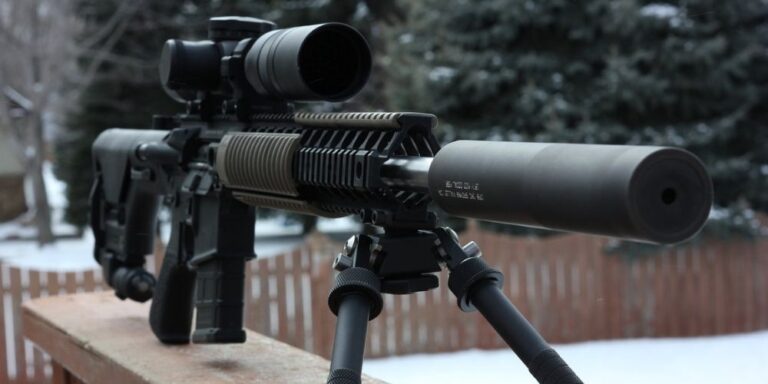The Stock Trigger Pull on an AR15 and Why It Matters to You
Trigger pull is one of those parts of an AR that some shooters may not understand. However, a well tuned trigger pull that you are used to can make a world of difference in your shooting ability, especially when participating in competition shooting events and hunting.
Let’s dive into the subject where we will discuss the following topics.
In the meantime here is the answer that you really came here for.
For many AR style weapons they are built to mil-spec which is covered under MIL-C-71186. MIL-C-71186 states that the trigger pull shall be free of creep and within the range of 5.5 to 8.5 pounds. Custom AR weapons and those that have been modified can have a trigger pull as light as 2.5 pounds.
What is Trigger Pull and How Trigger Pull affects your AR
Trigger pull is sometimes called trigger squeeze and can be defined as the amount of pressure that must be applied to the trigger to get the weapon to fire.
This pressure is often referred to as weight and is generally represented in pounds.
One way you can think of trigger pull is to imagine standing the weapon up on its buttstock. Now that the trigger would require a downwards force the “trigger pull” would be how much weight would you need to hang from the trigger in order to get the weapon to function.
In regards to how trigger pull affects your AR it falls back to the need for a stable shooting platform.
While the trigger pull does not affect your aiming ability it can impact the alignment of the barrel bore and your target when the trigger is squeezed.
As you squeeze the trigger, slight force is applied to the weapon at the same time. In an ideal trigger squeeze this pull is directly inline with the barrel bore and does not affect the shot.
However, as the trigger pull weight increases so does the likelihood that this extra force requirement could push the weapon slightly to the side.
This sideways movement even though it is only a minute amount could mean the difference in several inches or more on a long range shot.
With that being said a lighter trigger pull is not always your best option. Some people argue that a heavier trigger pull weight makes the weapon safer, as it is not as likely to accidentally go off.
Which is better? A higher or lower trigger pull weight?
The ideal trigger weight depends on your intended method of shooting. If you plan to always be in a controlled bench or competition type shooting then a lighter trigger, 2 pounds or so is ideal. On the other hand if you are carrying your weapon in a stressful environment, a heavier trigger pull could avoid accidental or inadvertent shots when stressed.
Bench top, sandbag and most competition shots allow you to sneak up on the trigger and properly prepare for the trigger squeeze.
This means that the minimal weight needed to squeeze the trigger the more accurate your shots are likely to be.
However, shooting in more stressful or unusual conditions requires some slightly different tactics.
A super light trigger in these conditions could result in you inadvertently moving the trigger past its breakpoint when you are startled or an uncommon variable such as gloves in cold weather is introduced.
On the other hand a heavier trigger weight in these conditions helps to ensure that when the trigger is squeezed it takes a concerted effort to move it past the break point.
This extra effort allows you time to properly line up the shot, accounts for gloves and minimizes the effect of an involuntary flinch reaction to gun fire. This is largely the reason that the mil-spec rifles come with such a heavy trigger pull.
What is the normal trigger pull weight on most AR 15s?
A mil-spec AR has a trigger pull weight of between 5.5 and 8.5 pounds. Many AR15s purchased come with this specification, however often you can find some variants that have upgraded triggers with a trigger pull around half the weight of the rifle generally in the vicinity of 4 pounds.
The original AR 15 was designed as a weapon for the military and over time the military adopted a set of standards that they wanted all versions to meet.
The most recent standard is covered in MIL-C-71186 and covers the specifications of the M4 Carbine.
These specifications come about as often several manufacturers will work together to meet a large military order and then all of the weapons will be branded under one name. This was the case with the Colt M16 rifle and several other versions as well.
In regards to trigger pull the military wanted a trigger pull that was smooth enough to remain accurate, yet heavy enough to avoid accidentally being triggered.
Keep in mind a large number of soldiers may have never handled a gun prior to joining the service. This heavier trigger pull was but one of the features intended to combat this inexperience.
Can I change the weight of the trigger pull on my AR?
It is possible to modify or change the trigger pull weight on an AR. However, modifying the original trigger is usually beyond the ability of the average user and opting for a drop in, or complete trigger package, is a better option in these cases. They can be swapped out by simply removing a few pins in many instances.
When deciding to upgrade your trigger you generally have three options.
First is individual replacement components sometimes called a direct replacement that come with springs etc and are the option that most resembles your original factory trigger.
Second is an all in one enclosed unit that you can simply drop in. These are great options when you want an exact tolerance because they are not dependent on the characteristics of your lower receiver.
The final option is an adjustable unit such as Timney AR 2 Stage Adjustable DH3 Trigger that allows you to adjust it for a rate between 1.5 and 3 pounds. Other models with wider weight ranges and heavier weights also exist.
Here is a short video demonstrating the replacement of a direct replacement style trigger.







